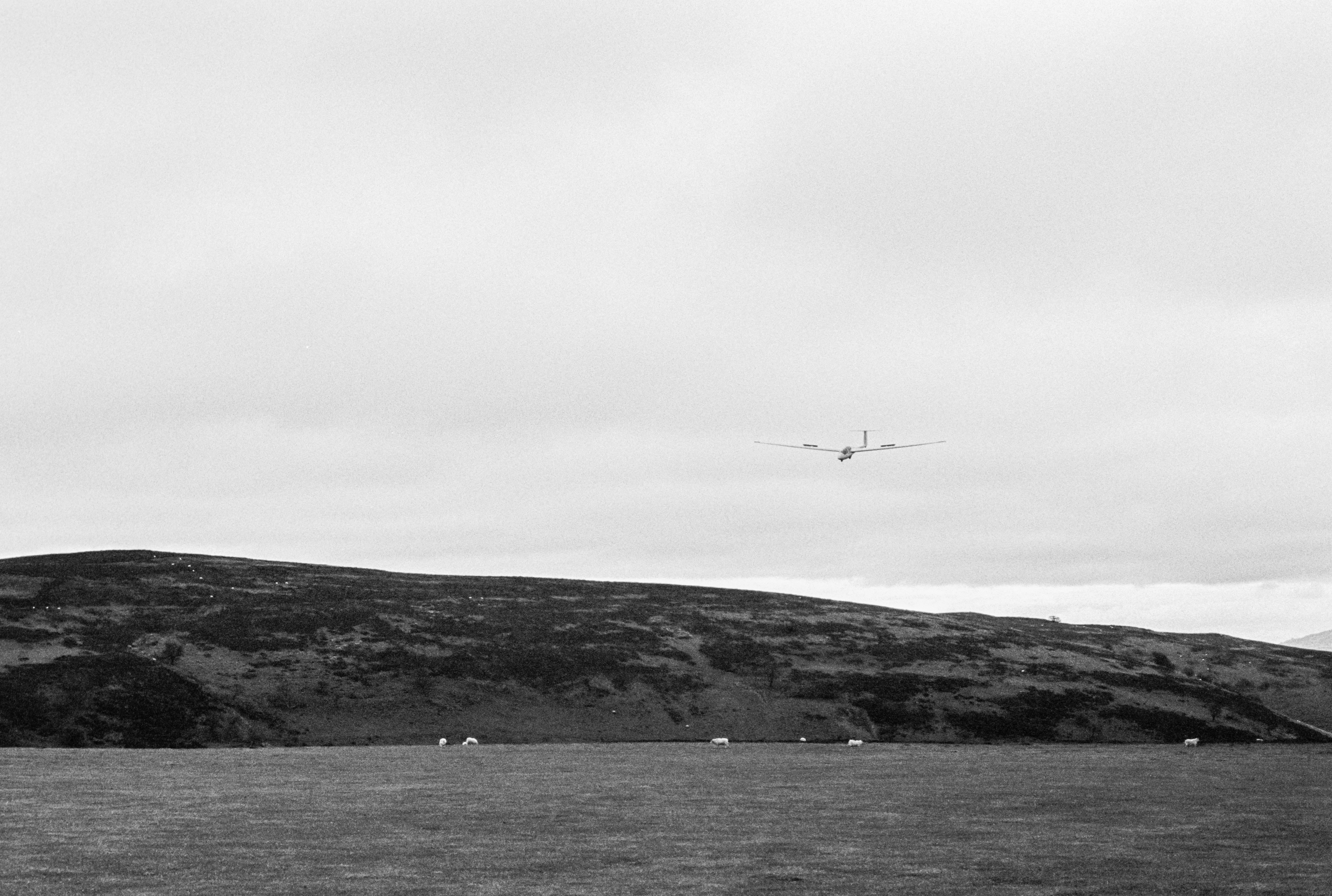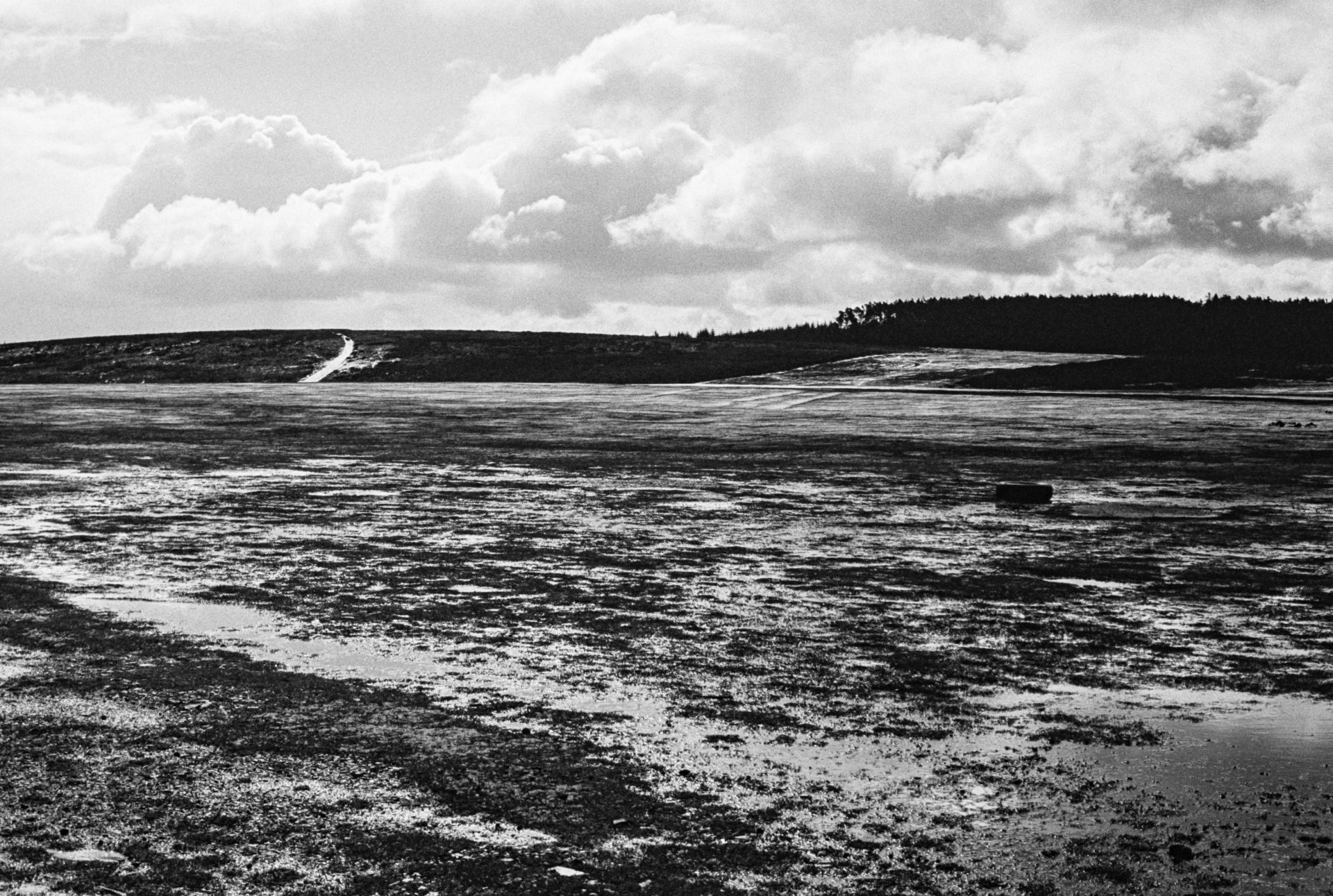This page contains full sized photographs which may not load correctly as caching improvement work is being done on this site.
It will be interesting to see how the latest Kodak Tri-X 400TX, being a professional grade B&W negative photographic film, perform when pushed to different speeds. The default rated speed is ISO/ASA 400.
The Tri-X is renowned for its sharpness (although not the sharpest, extremely sharp for all practical purposes) and wide exposure latitude (quoted in some literature as 512 times or 9 steps).

This photo above is shot at the rated speed – ISO 400. The negative perhaps is not processed professionally (processed at Snappy Snaps Cambridge, not recommended by the author as they also scratched my negatives). The scene is a high contrast scene. The grain is fine, but very notable in the sky. The picture appears to be grey and dull. Latitude is impressive – the glider is not yet saturated while the grass has its details recorded properly.

Shot at ISO 800 in a low contrast setting. Despite being pushed by a step, the grain is fine and less notable on the fuselage compared with the sky in the last photo. Sharpness is impressive, see the fan of the engine. Contrast looks OK. The darkest bit of the engine is saturated, but taking the lighting conditions into account, the latitude is satisfactory.

Another one at ISO 800. Impressive latitude with good details in both the clouds and the grass. Grain is fine and can go unnoticed. Contrast is pleasant and comfortable.

ISO 1600 in very high contrast setting. Impressive latitude – the sky and the shadows are both below saturation. Still not a lot grain despite being pushed by 2 steps. Very good sharpness – individual bricks can be distinguished.

ISO 1600 in very low contrast setting. Grain appears to be even finer compared with the ISO 800 and ISO 400 photos. Good sharpness.

ISO 1600 in very high contrast and interesting lighting conditions.